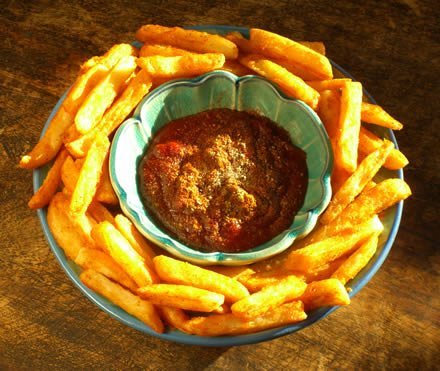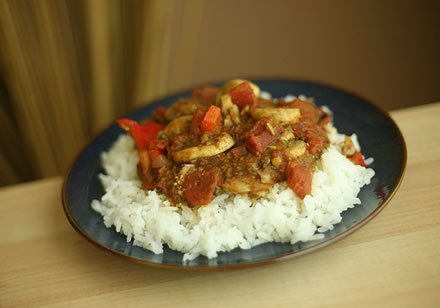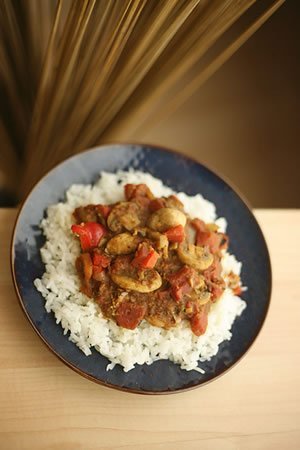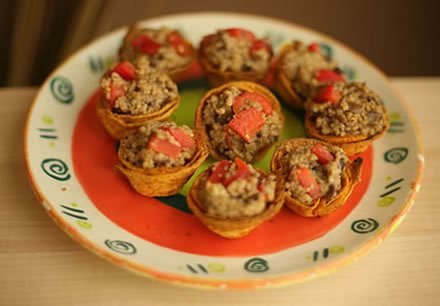
It’s kind of boring, being vegan. I realize that in making this statement, I’m sort of betraying the vegan cause. I don’t mean to though. Veganism is a lifestyle and a cause that I whole-heartedly support. I’m just saying it’s hard. I wish I had the commitment and determination to be vegan year round instead of only during Lent.
What I miss most of all is eating out. It’s nearly impossible to find a meal that’s totally free of animal byproducts.
Plus, I’ve been eating a lot of hummus these 40 days and 40 nights. Way, way too much hummus. I’ve also been having meals that don’t necessarily count as meals. Like last night’s dinner, which was utterly inspired by hunger, fatigue, and the wish to be warm.
Yesterday, we got another of those snowfalls that are almost commonplace here this winter. I say that with awe and gratitude -I know that I must enjoy every moment of this while it lasts, because it’s an anomaly. I’ve read though that this year, while remaining one of the hottest on record, is going to be cooler than the last five years because of the effects of La Nina. Regardless of the cause, the snow came, 8 inches in all, and when my office shut down at 11, I headed straight for the hills.
It’s amazing to me that we have a park right in the center of our city that is large enough to get lost in, which I did. I went to Forest Park and hiked for about an hour and a half, though honestly that last 20 minutes was just me trying to figure out where I’d put the car.
It should be said, before I go on, that I mean no blasphemy to Wallace Stevens with the title of my post here. The Snow Man is one of my favorite-ever poems, and its lovely lines twisted through my head as I walked.
One must have a mind of winter
To regard the frost and the boughs
Of the pine-trees crusted with snow…
I’m always taken aback by how serene a city can become under snow, as if we’re holding our collective breath in wonder. Because it was relatively early, no one was out, not yet even the sledders. I had the entire 1,293 acres to myself, and not a soul knew where to find me.
I’m always reluctant to be the first to put my tracks into a just-fallen snow. It seems blasphemous, somehow. But Forest Park is full of life not-human, so my imprints were not the first to mar the landscape. I tracked animals — squirrel and rabbit mostly, and something resembling Bigfoot. And the wind, which left scalloped etchings across the surface of the snow. I love how snow embodies the wind, gives it shape, both in its falling and again once it has landed. You could read a story in those markings.
…Of the January sun; and not to think
Of any misery in the sound of the wind,
In the sound of a few leaves,
Which is the sound of the land
Full of the same wind
That is blowing in the same bare place …
But all that hiking in the sound of the land and the sound of the wind – and in the mighty cold — left me ravenous. When I finally kicked off my boots, all I wanted in the world was a hot plate of French fries with spicy ketchup.
So this recipe is a) not a bean recipe (come back Saturday) and b) sort of a cheat. The fries are out of a bag. From the freezer. Sue me, then.
I am not going to detail the hows and whys of baking store-bought fries. It’s on the bag.
Anyway, it’s all in the ketchup (or, if you want to get upscale, the dipping sauce). This recipe for spicy ketchup is an approximation of the one they serve at one of my favorite pubs, the Schlafly Tap Room. I don’t feel like I’m spilling industry secrets since this is only my best guess, and over time I’ve tinkered with the recipe to get it where I like it. It has a nice, glowing heat to bring sensation back to your mouth once it thaws.
The Recipe:
Spicy Ketchup
1/2 cup organic ketchup
1 tablespoon plus 1 teaspoon cumin
1/4 teaspoon sweet paprika
1 teaspoon smoked paprika (or some other mild smoked ground pepper)
1/4 teaspoon Northwoods Fire (or a hot smoked ground pepper)
1/4 teaspoon cinnamon
1 pinch of allepo pepper (or hot pepper flakes)
1 smidge of freshly ground black pepper
1 sprinkle of sea salt
Place ketchup in a small serving dish, add all spices, stir and serve. This will serve several people.
And the poem:
The Snow Man
One must have a mind of winter
To regard the frost and the boughs
Of the pine-trees crusted with snow;
And have been cold a long time
To behold the junipers shagged with ice,
The spruces rough in the distant glitter
Of the January sun; and not to think
Of any misery in the sound of the wind,
In the sound of a few leaves,
Which is the sound of the land
Full of the same wind
That is blowing in the same bare place
For the listener, who listens in the snow,
And, nothing himself, beholds
Nothing that is not there and the nothing that is.





